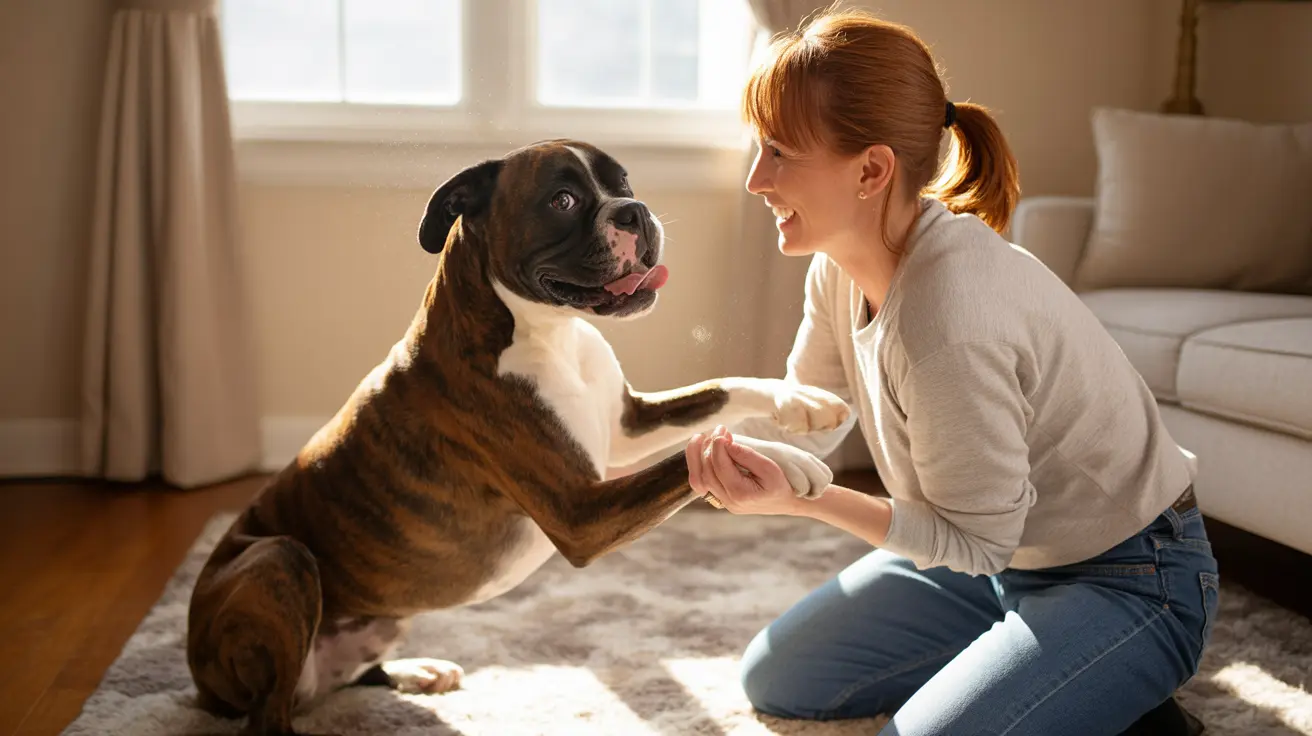5 Things to Avoid Doing Around Your Dog to Prevent Fear and Aggression
As loving dog owners, we want the best relationship possible with our four-legged companions. However, many well-intentioned behaviors can actually undermine our bond and create fear, anxiety, or aggressive responses in our dogs. Understanding what to avoid doing around your dog is crucial for maintaining a healthy, trusting relationship that benefits both you and your pet.
Dogs communicate primarily through body language and energy, making them highly sensitive to our actions, emotions, and environmental changes. When we engage in certain behaviors without considering their impact on our dogs, we can inadvertently create stress, confusion, or defensive responses. By recognizing these problematic patterns and adjusting our approach, we can foster a more harmonious household while preventing behavioral issues before they develop.
This comprehensive guide will explore five critical things to avoid doing around your dog, helping you build stronger boundaries and clearer communication that leads to a more confident, well-behaved companion.
Never Engage in Rough Play or Wrestling Without Clear Boundaries
One of the most common mistakes dog owners make is engaging in aggressive play like wrestling or rough physical games without establishing proper rules and commands. While it might seem like harmless fun, this type of interaction can encourage aggressive behavior and blur the lines of appropriate conduct.
When you wrestle with your dog or engage in overly physical play, you're essentially teaching them that using their mouth, paws, and body weight against humans is acceptable. This can quickly escalate into problematic behaviors, especially when your dog attempts the same rough play with children, elderly family members, or guests who aren't prepared for such intensity.
If you do choose to engage in more physical play with your dog, it should only occur with clear rules and commands in place. Establish specific start and stop cues, and ensure your dog understands the difference between appropriate play behavior and everyday interactions. Teaching commands like "gentle" or "easy" can help maintain control during these sessions.
Instead of rough wrestling, consider alternative games like hide and seek or fetch with trade training. These activities provide mental and physical stimulation while reinforcing positive behaviors and strengthening your bond without encouraging aggressive tendencies.
Avoid Displaying Anger or Arguing in Front of Your Dog
Dogs are incredibly sensitive to human emotions and energy, making them highly susceptible to the stress and tension that comes with arguments or displays of anger. When you argue with your partner or express strong negative emotions in front of your dog, it can upset them significantly and potentially cause concerning behavioral responses.
Many dogs will react to household conflict by barking, pacing, or even displaying protective aggression towards one of the arguing parties. This protective instinct, while seemingly loyal, can actually create dangerous situations and reinforce problematic behaviors. Your dog may begin to view one family member as a threat to another, leading to ongoing tension and potential aggression issues.
The psychological impact of witnessing human conflict can also create long-term anxiety in dogs. They may become hypervigilant, constantly watching for signs of tension, or develop stress-related behaviors like excessive panting, drooling, or destructive actions.
Managing Emotional Situations Around Your Dog
If conflicts do arise in your household, try to remove your dog from the situation or move the discussion to a private area. Dogs thrive in calm, predictable environments, and maintaining emotional stability around them helps prevent the development of anxiety-related behavioral issues.
When you do need to address behavioral corrections with your dog, avoid physical punishment as it can cause fear or aggression. Instead, use calm, consistent training methods that build trust rather than fear-based compliance.
Don't Overwhelm Your Dog with Loud Groups or Parties
Inviting loud groups of friends over to watch sports or hosting large social gatherings can be extremely overwhelming and frightening for many dogs. The combination of multiple unfamiliar voices, increased energy levels, and unpredictable movements can trigger stress responses that manifest as barking, hiding, or even biting behaviors.
Dogs with limited life experience may find these situations particularly stressful, as they haven't been properly socialized to handle large groups or high-energy environments. Even well-socialized dogs can become overwhelmed when their normal routine is disrupted by loud, chaotic gatherings.
The stress from these situations can lead to concerning behaviors including excessive barking, attempts to escape, destructive actions, or defensive aggression toward guests. Some dogs may also develop negative associations with visitors, making future socialization more challenging.
Training Your Dog for Social Situations
If you regularly host gatherings, it's important to gradually train your dog to handle these environments. Start with small groups and slowly increase the number of people and noise level as your dog becomes more comfortable. Provide a safe space where your dog can retreat if they become overwhelmed, such as a quiet room or their crate.
Consider introducing dogs to new people and situations gradually, allowing them to approach visitors on their own terms rather than forcing interactions. This approach helps build positive associations with social gatherings rather than creating fear-based responses.
Keep Intimate Moments Private from Your Dog
Having sex with your partner while your dog is present in the room can significantly disturb and confuse your pet. The unexpected noises, movements, and changes in energy can cause fear, anxiety, or even aggressive responses as your dog tries to interpret what's happening.
Dogs may perceive the sounds and movements associated with intimate activities as signs of distress or conflict, potentially triggering protective behaviors or creating anxiety about their owners' safety. This confusion can lead to problematic behaviors like interrupting, barking, or showing aggression toward one partner.
Teaching your dog to sleep alone and be comfortable in their own space provides numerous benefits beyond privacy. It helps establish healthy boundaries, reduces separation anxiety, and creates a more structured environment that dogs find comforting and predictable.
Benefits of Teaching Independent Sleep Habits
When dogs learn to be comfortable sleeping alone, they develop greater confidence and independence. This skill also prevents them from becoming overly dependent on constant human presence, reducing anxiety when they need to be left alone during the day.
Creating a designated sleeping area for your dog, whether it's a crate, dog bed, or specific room, helps establish clear boundaries and routines that contribute to overall behavioral stability.
Never Send Mixed Signals with Inconsistent Rules
One of the most damaging things you can do to your relationship with your dog is sending mixed signals by allowing certain behaviors in some contexts while punishing the same behaviors in others. For example, letting your dog jump up on you when you're in casual clothes but scolding them for jumping on guests or when you're dressed for work creates confusion and undermines trust.
Dogs thrive on consistency and clear communication. When rules constantly change based on circumstances they don't understand, it creates anxiety and erodes their confidence in their relationship with you. This inconsistency can lead to behavioral problems as your dog struggles to understand what's expected of them.
The psychological impact of inconsistent rules on dogs is significant. They may become hesitant to engage in any behavior, fearful of making mistakes, or conversely, they may ignore commands altogether if they've learned that rules are unreliable.
The Importance of Consistent Training
Establishing clear, consistent rules and boundaries from the beginning helps create a stable environment where your dog can thrive. If jumping is not allowed, it should never be allowed, regardless of the situation. If certain areas of the house are off-limits, they should always be off-limits.
Keep training simple and consistent, avoiding confusing commands or mixed messages. When all family members enforce the same rules in the same way, dogs learn faster and feel more secure in their environment.
Reading Your Dog's Body Language and Preventing Problems
Understanding canine body language is crucial for identifying fear or stress before it escalates into aggression. Dogs communicate their discomfort through various subtle signals that owners often miss or misinterpret.
Watch for signs like stiff or unnatural body posture, excessive panting when not hot, excessive drooling, pacing, hiding, or attempts to escape situations. These behaviors often indicate that your dog is feeling overwhelmed or stressed and needs space or a change in environment.
Never assume that friendly, wiggly dogs always want to be petted or that a quiet dog is necessarily comfortable. Learning to read these subtle communication signals helps prevent situations where your dog feels the need to resort to more dramatic behaviors like growling or snapping.
Responding to Stress Signals
When you notice signs of stress or discomfort in your dog, respond immediately by removing them from the situation or reducing the stressor. This proactive approach prevents the escalation of fear into aggression and helps build trust between you and your pet.
Monitor behavioral changes in your dog and consult with veterinarians or certified trainers when you notice persistent stress signals or concerning behaviors developing.
Frequently Asked Questions
How can I tell if my dog is stressed during social gatherings?
Watch for signs like excessive panting, drooling, pacing, hiding, attempts to escape, or unusual aggression. Stressed dogs may also refuse treats they normally enjoy or display repetitive behaviors like spinning or excessive licking.
Is it ever okay to roughhouse with my dog?
Roughhousing can be acceptable if you establish clear rules and commands, but it should be avoided entirely with dogs showing any signs of aggression or with families that include small children who might be accidentally hurt during play.
What should I do if my dog shows aggression during arguments?
Remove your dog from the situation immediately and address conflicts in private areas away from your pet. Consider consulting a certified dog trainer if aggressive behaviors persist or worsen.
How do I teach my dog to be comfortable sleeping alone?
Start gradually by creating a comfortable sleeping space with familiar items, then slowly increase the distance and time spent apart. Use positive reinforcement when your dog settles calmly in their designated area.
Why does consistency matter so much in dog training?
Dogs learn through repetition and clear patterns. Inconsistent rules create anxiety and confusion, making it difficult for dogs to understand expectations and potentially leading to behavioral problems.
Can mixed signals really damage my relationship with my dog?
Yes, inconsistent rules and mixed signals undermine trust and can create anxiety in dogs. They may become hesitant to engage in behaviors or ignore commands altogether if they've learned that rules are unreliable.
What's the best way to socialize my dog for large gatherings?
Start with small groups and gradually increase the number of people and noise level. Always provide a safe retreat space and allow your dog to approach new situations at their own pace rather than forcing interactions.
Conclusion
Building a strong, trusting relationship with your dog requires understanding and respecting their unique communication style and emotional needs. By avoiding these five critical mistakes—rough play without boundaries, displaying anger, overwhelming social situations, lack of privacy, and inconsistent rules—you create an environment where your dog can thrive and develop into a confident, well-behaved companion.
Remember that dogs are highly sensitive to our emotions and actions, making our behavior around them just as important as formal training sessions. Consistency, respect, and clear communication form the foundation of a healthy human-dog relationship that benefits everyone in your household. When you prioritize your dog's emotional well-being and establish appropriate boundaries, you're investing in a lifetime of mutual trust and companionship.






